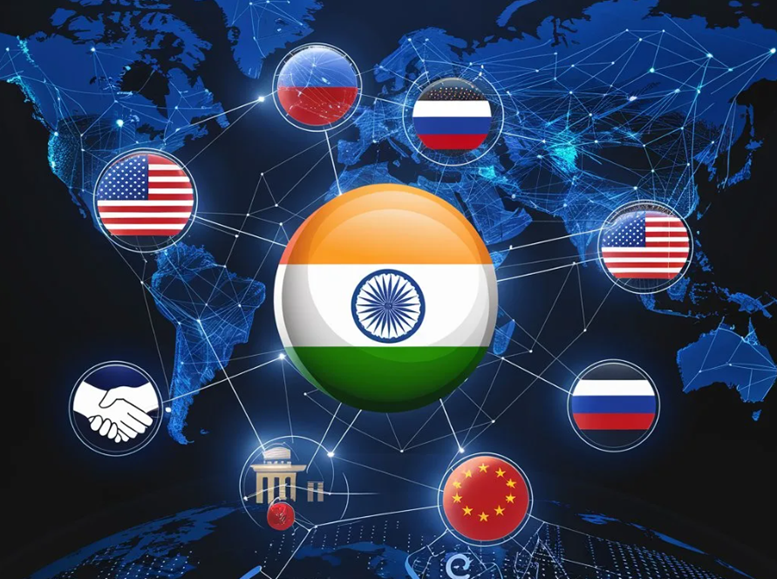India : an opportunity basket for the world economy.
India: The opportunity basket for World Economies
Over the past decade, India has emerged as one of the most dynamic economies in the world. Its structural reforms, demographic dividend, and rapid digital adoption have placed it at the center of global attention. As businesses recalibrate supply chains, investors reallocate capital, and governments rethink geopolitical partnerships, India’s trajectory will be pivotal in shaping the possibilities for world economies in the coming decades.
This article examines India’s potential through the lens of a management consultant—assessing opportunities, constraints, and implications for global stakeholders.

- India’s Growth Context
Macroeconomic Performance
India is currently the fastest-growing large economy, registering GDP growth consistently above 6% even amidst global uncertainties. Its resilience during supply chain disruptions, energy price shocks, and monetary tightening has reinforced confidence in its macroeconomic fundamentals.
Demographics and Workforce
With a median age of 28, India enjoys a demographic advantage over aging economies in Europe, North America, and East Asia. Over 12 million people enter the workforce annually, creating both a challenge and an opportunity—an abundant labor pool for industry, but also a pressing need for skilling and job creation.
Digital and Technology Leapfrogging
India has leapfrogged traditional development stages through its digital public infrastructure—most notably Aadhaar, UPI, and the broader “India Stack.” This has enabled financial inclusion for over 450 million people and created one of the most advanced digital payment ecosystems globally.
- Strategic Opportunities
- Manufacturing as a Global Hub
- China+1 Strategy:Multinational companies are diversifying supply chains, and India is positioning itself as a credible alternative.
- PLI Schemes:Government incentives under the Production-Linked Incentive programs have attracted investments in electronics, semiconductors, and renewable energy.
- Cost Competitiveness:With lower labor costs and a growing domestic market, India can offer economies of scale similar to East Asia’s industrial rise.
- Services Export Leadership
- IT & BPM Industry:India already accounts for more than 55% of the global outsourcing market. With AI, cloud, and cybersecurity growing, Indian firms can move up the value chain.
- Professional Services:Beyond IT, India is developing a strong footprint in consulting, legal, design, and R&D services, reinforcing its role as the “back office” and increasingly the “brain office” of the world.
- Energy and Sustainability
- Renewables Expansion:India targets 500 GW of renewable energy capacity by 2030, creating opportunities for global capital in solar, wind, green hydrogen, and storage solutions.
- Decarbonization Pathways:India’s large industrial base (steel, cement, refining) represents one of the largest global opportunities for low-carbon technology adoption.
- Domestic Consumption Engine
- Rising Middle Class:By 2030, India is expected to add nearly 140 million middle-income households.
- Consumer Sectors:Retail, healthcare, financial services, and e-commerce will witness sustained demand, providing global businesses with scalable markets.
- Constraints and Risks
Infrastructure Bottlenecks
Despite progress in roads, ports, and logistics, India still faces infrastructure gaps that raise transaction costs and deter efficiency. Large-scale public–private partnerships will be critical to closing this deficit.
Regulatory and Policy Uncertainty
While reforms like GST and Insolvency Code have strengthened India’s business environment, unpredictable regulatory interventions in areas such as data privacy, e-commerce, or taxation may create uncertainty for foreign investors.
Employment and Skilling Challenge
The demographic dividend could turn into a liability without adequate skilling. India must align vocational training, higher education, and industry partnerships to prepare its workforce for AI-driven and automation-intensive industries.
Geopolitical Dynamics
India’s strategic balancing between the West, Russia, and its Asian neighbors introduces both opportunities and vulnerabilities. While global investors see India as a stable democracy, regional tensions and security challenges remain factors to monitor.
- Implications for World Economies
Re-shaping Supply Chains
India’s rise as a manufacturing and technology hub will help diversify global value chains, reducing overdependence on a single geography. This benefits multinational corporations seeking resilience in operations.
Capital Flows and Investments
Global institutional investors are increasingly allocating capital to Indian equity and debt markets. Sovereign wealth funds and private equity firms are also deepening their India strategies, seeing it as a long-term growth story.
Geopolitical Balance
India’s active participation in forums such as G20, BRICS, and Quad enhances its role in shaping multilateral trade, energy security, and climate negotiations. For the world, India represents both a growth market and a strategic ally.
Technology and Digital Standards
India’s digital public goods model offers a blueprint for other emerging economies. Exporting such frameworks may redefine how the developing world adopts inclusive and cost-efficient digital solutions.
- The Way Forward
For India to realize its full potential, three imperatives stand out:
- Accelerating Infrastructure Modernization– ports, logistics corridors, renewable grids, and urban infrastructure.
- Deepening Human Capital Development– investing in skilling, higher education, and industry–academia partnerships.
- Strengthening Policy Predictability– ensuring investor confidence through transparent and stable regulatory regimes.
India is no longer an emerging story—it is a shaping story for world economies. Its demographic scale, digital infrastructure, reform momentum, and strategic positioning create a unique convergence of opportunities. However, to sustain its rise, India must execute with discipline on infrastructure, skilling, and governance.
For global businesses, India is not just a market to enter; it is a partner to co-create with. The next decade will determine whether India’s promise transforms into sustained global leadership—and the choices made now will reverberate across world economies for generations to come.
Author: Mr. Amiya Satpathy is a seasoned transformational leader with over 25 years of experience driving strategy, digital transformation, and operational excellence across India, Southeast Asia, the Middle East, and Australia. Having held senior roles at Renoir Consulting, Accenture, and PwC, he has led 60+ high-impact consulting engagements for leading conglomerates, mid-size companies & startups. He combines deep expertise in leadership development, strategy execution, growth and profitability improvement. He can be reached at https://linkedin.com/in/amiyasatpathy
